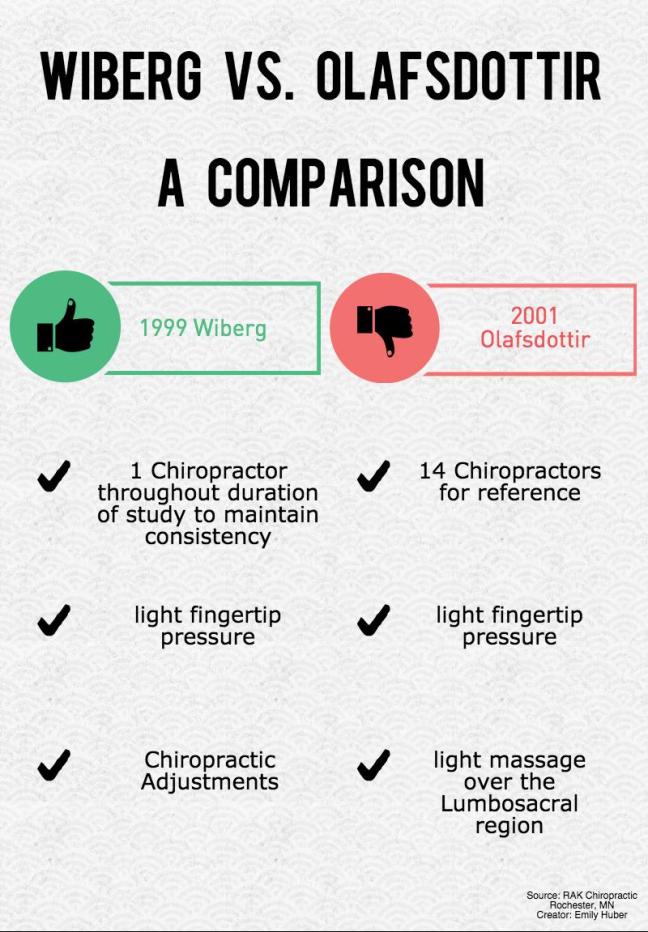Colic and irritability can be one of the most frustrating feats for both newborns and their parents. Many of the “traditional” approaches to treating colic have proved to be unsuccessful and, even sometimes, detrimental to the child’s health. Chiropractic adjustments for newborns with colic and irritability has proven to significantly reduce the amount of stress a child’s body is under, therefore allowing for less colic and irritability. The beauty of treating colic and irritability through chiropractic care is there is no introduction of new chemicals or foreign substances into the child’s body to produce positive, successful results for both the child and parents.
Where’s the proof?
Besides countless testimonials from parents with children who have suffered from this, there is also plenty of well-documented research behind the claim. There are two studies that are often cited in relation to the topic of treating colic and irritability with chiropractic care. The first is a study done by JM Wiberg in 1999. The second is a study completed by E. Olafsdottir in 2001.
JM Wiberg took a group of infants suffering from colic and irritability and randomly selected two groups. One group received “light fingertip pressure” chiropractic manipulative adjustments while the other group was administered a drug typically used to treat colic in traditional medical settings- Dimethicone. Wiberg chose one chiropractor to administer all adjustments throughout the study. After the first week of observation, the Dimethicone group experienced a decrease in crying of 1 hour. The chiropractic adjustment group had resulted in 2.4 hours of reduced crying. By the second week, the Dimethicone group was still at a rate of 1 hour of reduced crying while the chiropractic adjustment group had extended to 2.7 hours of reduced crying time. Thus, the study concluded that chiropractic adjustments did, indeed, significantly improve colic and irritability.
E. Olafsdottir also had two groups of infants. He decided to have one group of 46 infants receive “light fingertip pressure” therapy while the opposing, control group of 40 infants received no treatment. Olafsdottir chose a group of 14 chiropractors to be his reference for this study. At the end of the study, Olafsdottir reported that 32 of the 46 infants receiving treatment experienced improvement, and 24 of the 40 control group infants experienced improvement. Because the results were similar (69.9% compared to 60.0%), Olafsdottir concluded that chiropractic adjustments were not successful in treating colic and irritability.
Why such different results?

Being that Wiberg chose to have the same chiropractor complete all the spinal adjustment’s throughout the trial kept the results consistent, leaving room for fewer variables, and, therefore, adding consistency to the trial. However, the biggest discrepancy between the two studies is the type of chiropractic care utilized for the treatment of colic and irritability. Both studies used methods of “light fingertip pressure”, but Wiberg’s study performed chiropractic spinal manipulative adjustments, while Olafsdottir performed “light massage over the Lumbosacral region“. So, in conclusion, even though Olafsdottir’s study is often used as competing information for Wiberg’s study, it is, in fact, unfair to do so because of the vast difference in techniques used.
To sum it all up…
At a most basic level, chiropractic care works to keep the body aligned so that nature can run its natural healing course. If a child is not receiving chiropractic adjustments, their alignment and nervous system is going to be thrown for a loop, and often these symptoms become categorized as colic and irritability. Regular chiropractic adjustments are a healthy way to provide your child with relief from discomfort they are unable to voice themselves without subjecting them to various rounds of medication and therapies.
